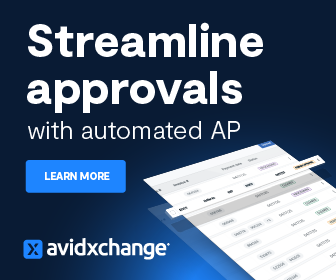Controllers Council recently held a discussion entitled, The Future of AP Automation is Now, presented by Transcepta.
Panelists included Shan Haq, who is Chief Strategy Officer at Transcepta with 20 plus years of accounting and finance and automation experience.
Following are key takeaways to this discussion. If you are interested in learning more, view the full roundtable panel video archive video here.
What are the Challenges of Manual AP?
Manual processing, obviously, it’s expensive. The next one, this just comes down to getting control of the invoice to pay cycle. I mean, if you’re manual and it’s taking you 15 days just to get an invoice through the approval and payment process, then you’re obviously missing early pay discounts because not every industry is this real common, but in the industries where early pay discounts are common, typically it’s a 2% net 10. The next one, you could argue this is the most significant component in terms of driving efficiency in a manual AP department. If you’re using POs, the good news is, you can really automate end to end in a true straight through processing way. The bad news is if you’re manual, it can be a nightmare. Another is lack of visibility. Customers share all the time that, if they’re manually processing invoices, they get to month end and it really slows down the month end process. The last one is people have different thoughts on how they approach vendors, but most customers do want to provide visibility and timely payments of invoices. so, know, slow approval cycles, they really do cause relationships to be poor.
AP Automation Benefits
- Lower costs and better accuracy
- Improved visibility for decision making
- Optimized cashflow
- Faster month-end close
- Less fraud risk
- Better vendor relations
- Happier AP staff
What is Touchless Invoice Processing?
What we want to do when we’re automating AP is really get the benefits of speed, accuracy, and efficiency. The way you do that is by putting technology in place to truly achieve a touchless end-to-end process. So, the components that go into are that the invoice must be captured in a certain way. If it’s a PO-based invoice, we want an automated match at the line level. If it’s a non-PO invoice, ideally the GL coding is automated as well. And the only human involvement that you would see is in a non-PO invoice scenario where you’ve got a human approval. But other than that, you want these invoices to go into the system and deliver it into your ERP, both the data and the image, without any human touch points.
Where Can Automation Help?
- Invoice capture
- Approvals
- Payments
- New vendor onboarding
- Supplier collaboration
- Real-time visibility
What is your Payment Strategy?
The right way to think about payment is it’s important for you to start kind of with your own strategy and then find an automation partner that will implement that strategy. So, if you are looking to simply get as efficient as possible, then make sure that you’re choosing a partner that is going to support the idea that you’re just going to get everybody on ACH. You might be interested in making things easy for your vendors. Some companies do take this approach. And so, then you want to make sure that you’ve got multiple options to pay your vendors and you let your suppliers or your vendors choose from those options. And then another one is the profit strategy. It can be lucrative to pay vendors with a virtual card. You can get a rebate there, and you could take the approach that we’re not going to offer checks. It’s a card or it’s an ACH. And there are some things that you can do to optimize or maximize the take up on virtual card payments.
Again, the point here is don’t let your automation partner kind of choose your strategy for you. You pick your payment strategy and then pick a partner that’ll kind of execute that for you and you’ll typically be happy with the results.
AI in AP Automation
Obviously, I’m beating the drum of using AI in capture and avoiding using it to make OCR better. But I think that is the key component. And I would say when you’re looking at AI and how it’s used, it should do things like predict GL codes and it should learn things like that. The other thing that you can do is if you’re using AI in conjunction with, or if it’s in a platform that is using a supplier network, the AI can learn from not just your behavior and your own kind of company workflows, but it can also learn from aggregated information and data from various industries. There’s a lot of room for using AI, but today, it’s most seen in the capture process, but you certainly can use it in the in the kind GL prediction and matching processes as well.
Where to Start
To view this question and learn more about corporate growth, view the complete webcast here.
ABOUT OUR SPONSOR:
Transcepta uses AI to eliminate efficiencies and accounts payable with an enterprise class platform that’s trusted, sophisticated, and scalable. Transcepta AI powered solutions deliver the best in straight through processing enabling finance teams to achieve true touchless touchless automation reduce costs and better manage cash flow organizations across industries rely on Transepta to modernize ap and transform they how they work with suppliers learn more at transepta.com




